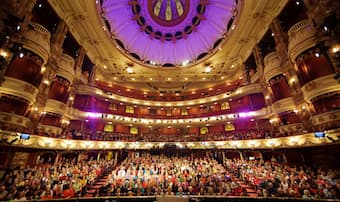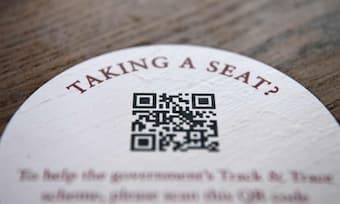
English National Opera Coliseum
The word “normal” has shifted in meaning over the past nearly two years of the covid pandemic. For concert halls and opera houses, and other arts venues such as galleries and exhibition spaces, “normal” now has a variety of meanings, from e-tickets and downloadable programme notes to socially-distanced performances and events, to the use of masks, covid passes, pre-booked and timed exhibition tickets, and other measures to ensure visitors and audiences are kept safe.
For those who prefer not to sit hugger-mugger with one’s neighbour at a concert or opera performance, socially-distanced venue seating has been an unexpected bonus. But for those who run and work in these venues, and for the musicians and performers, the socially-distanced model is not financially sustainable long term, for obvious reasons. My sense from conversations with musician friends and colleagues, and from more general observations of the state of the arts in 2021, was one of weary resignation, “here we go again”, as another lockdown closed venues and denied musicians work and income.
Yet despite almost half a year of lockdown in the UK in 2021, culture bounced back with exuberance, invention and excitement when venues were able to reopen. There was a palpable sense of relief, tinged with trepidation – would audiences come back, and would they return in sufficient numbers? – but perhaps the best thing was that returning to the concert hall or opera house felt “normal” again, despite the covid measures, and my goodness, it was simply wonderful to hear live performance again! A visit to English National Opera for Philip Glass’ mesmerising opera Satygraha in October proved that venues can make audiences feel welcome and safe, without labouring the covid-secure message. Innovations such as the ability to order interval drinks to be delivered to your seat ensured that the bars and social areas were less crowded. Make audiences feel safe and they will return – that much was clear, from ENO and the Royal Opera House to the lunchtime concert series I run with pianist Duncan Honeybourne – and I hear similar reports from other concert organisers and venue managers.
Philip Glass: Satyagraha
Perhaps the greatest indicator that live performance was returning to “normal” was the Proms. After what I felt was an “excuse for the Proms” in 2020, in 2021 we were treated to something closer to a normal Proms season, albeit with fewer international artists/ensembles due to ongoing travel restrictions. This proved to be a splendid opportunity to showcase all the wonderful homegrown talent we have here – from the remarkably talented Kanneh-Mason family to great orchestras such as the Bournemouth Symphony Orchestra, Chineke! and the Britten Sinfonia.
Sheku Kanneh-Mason performs The Swan from the Carnival of the Animals (BBC Proms 2021)

New measures in performance venues are mostly suited to those
who use smart phones © Neil Hall/EPA
A number of innovations, hurried in to ensure venues, performers and audiences were kept safe and “covid-secure”, have actually made the concert- or opera-going experience rather more enjoyable, at least as far as I am concerned. I welcome the opportunity to download free programme notes ahead of the performance, and paperless tickets are useful too. At the Coliseum, home of English National Opera, a QR code on the back of the seat in front, allows one to order interval drinks to be delivered to one’s seat. I am particularly taken with this innovation as I always find the bars and other social areas at concerts very crowded and it is often a scramble to order and enjoy a drink in the allotted interval time. Instead, one can savour one’s chilled Chardonnay during the interval, and indeed into the next act.
Useful though these measures are, however, they are very much suited to those who use smart phones, and my concern going forward is that older or less tech-savvy audience members may feel, or even be excluded because they do not possess a smart phone. Venues therefore must ensure that there are alternatives in places, including printed tickets and programmes, to make everyone feel welcome and comfortable.
With the current uncertainties, it’s hard to be wholly optimistic about what 2022 will bring, certainly in the immediate term, but what the past year has demonstrated is that performers, venues and audiences are prepared to be flexible and adaptable in the light of changing restrictions and guidance, and that our craving for culture and particularly live performance is undented.
For more of the best in classical music, sign up to our E-Newsletter



